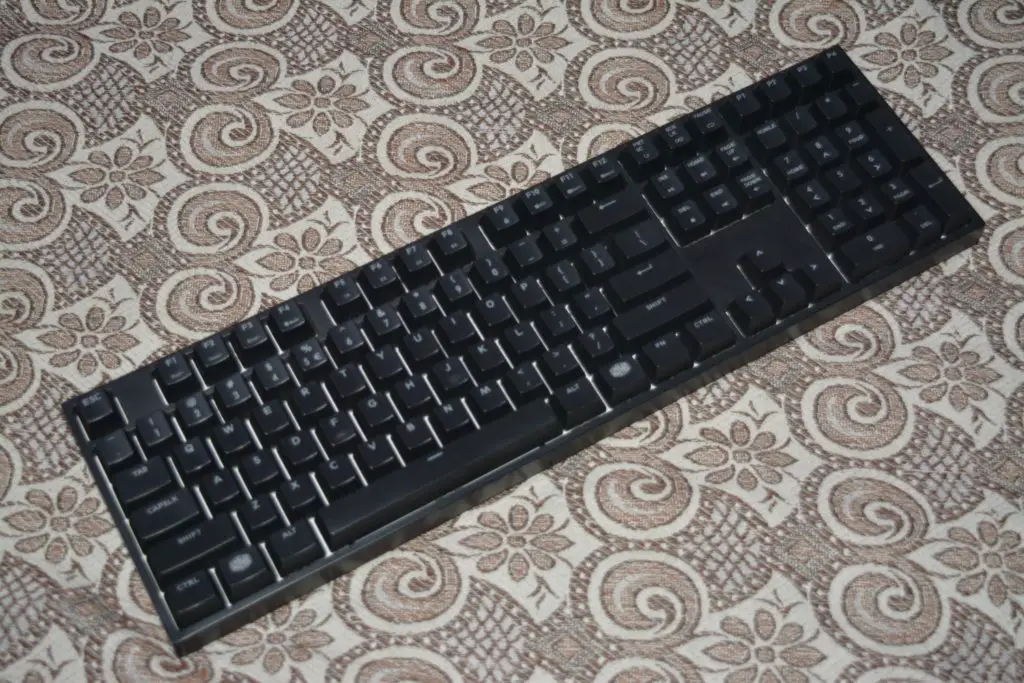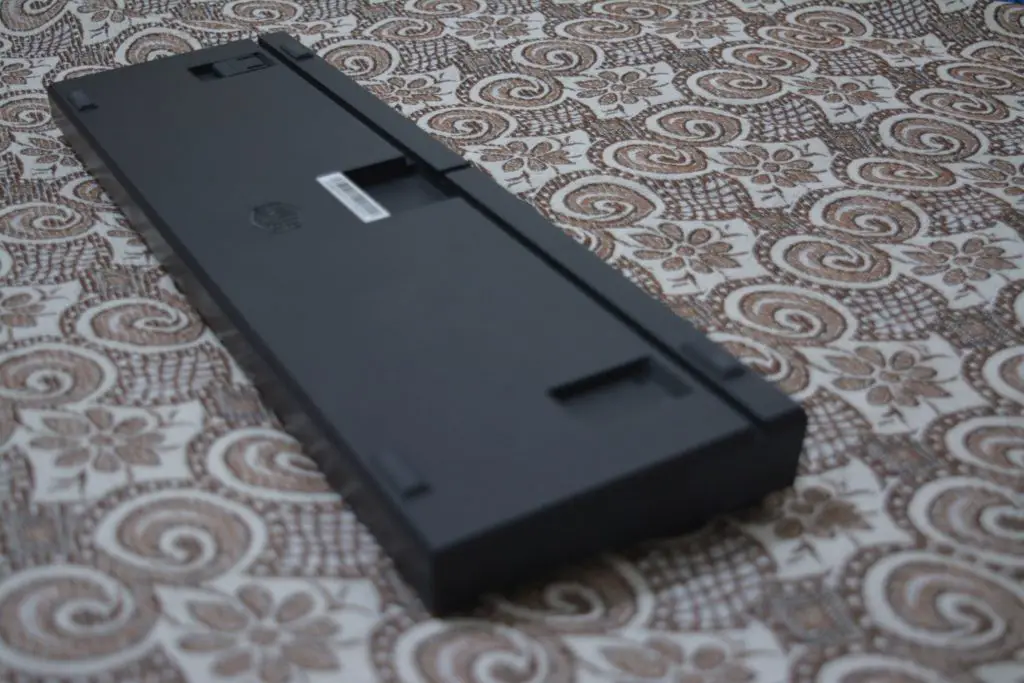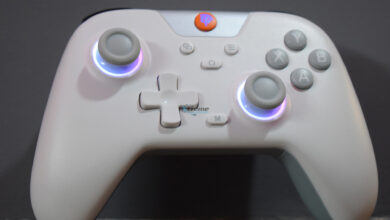Cooler Master is known to make sturdy personal computer chassis. When I think of cooler master I think of the bad-ass behemoth that is HAF X, I used to drool looking at it. Now though people are more sophisticated and minimalism is a thing now.
And so Cooler Master is completely revamping their product lineup to better suit today’s business environment which does not just want performance but also sleek looks and functional design. As much as I would love to cover Cooler Master cases, today we have something else entirely from the same company trying to reinvent itself.
We are looking at a product from the cooler master, which they are less known for, cue Cooler Master keyboards, and model Masterkeys Pro L. This is a keyboard built like a frickin’ tank with all of the checkmarks, all the bells and whistles, and RGB a modern keyboard would want. With that said let’s dive right in, head first.
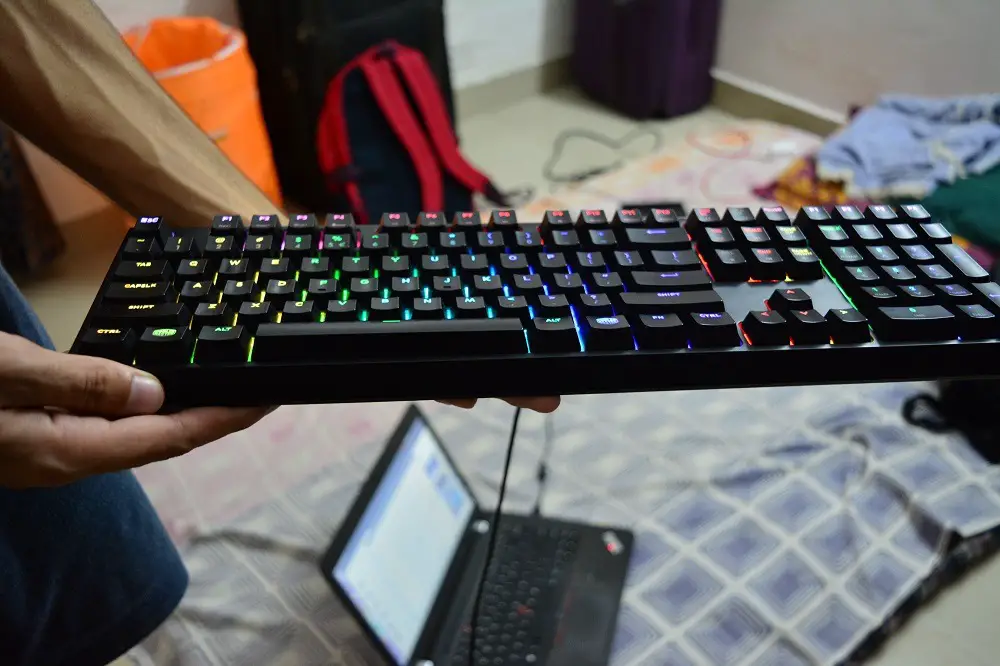
The Masterkeys Pro L is the latest offering from Cooler Master with a 104-key US-International keyboard layout. The version which I have in my possession is the one with the Cherry MX Red switches and of course the much-acclaimed RGB LEDs, mechanical keyboard enthusiasts swear by Cherry MX.
This is a good sign, CM isn’t taking any risks here. The keyboard is also offered equipped with Cherry MX Blues and Cherry MX Brown switches, as listed on the Cooler Master website. It comes with a key-cap puller and a micro-USB cable inside the box. Mine is a review sample that came after taking some rounds so it didn’t though I am not sure who might be responsible whether CM themselves or the reviewers in question. Seeing the board at first glance it becomes clear that CM is playing this safe, though it remains to be seen how many punches they pull.
The front of the keyboard is very understated, there’s not even a cooler master logo anywhere on the front except… Oh! the Super keys are both sporting the Cooler Master logo instead of the usual Windows logo. Fair enough. There is not much to see here on the front, a no-nonsense design. This is really standard stuff here. The key-caps are standard full-depth, nicely rounded double-shot ABS.
The key-caps are meant to last, just as with the rest of the design so far. Perfect. The lettering is also pretty standard apart from the Super keys of course. The font used for the key-caps is clear and professional. There are four keys above the numeric keypad, numbered P1 through P4. These will be used to switch between the various profiles. The outer encasing is tough plastic, it doesn’t catch fingerprints easily and the inner board is steel which explains the heft.
The encasing itself is the out of your way as much as possible, and the small bezels are subtly rounded, and very slick. The keyboard body is rigid and wouldn’t flex no matter what I throw at it, metaphorically speaking. You could play baseball with this thing. Now, cooler master has done an excellent job so far but I would have loved to see dedicated media keys instead of adding them as a sub-layer activated by pressing down FN.
Additional functionality is also mapped to keys F1-F12, more on that later. To introduce this functionality they have given up the menu key which is now the FN key and only serves to activate the keyboard’s onboard features as well as the Media Keys which are mapped onto Insert-pg down keys. The key-caps F and J are marked with a small bump to let you know when you are on the home row, the same with Numpad 5. With the keyboard in its resting position, we see that the upper rows are slightly higher, and the numeric row is higher than say home row or bottom row keys. And The function keys are slightly depressed back to keep them safely out of the way.
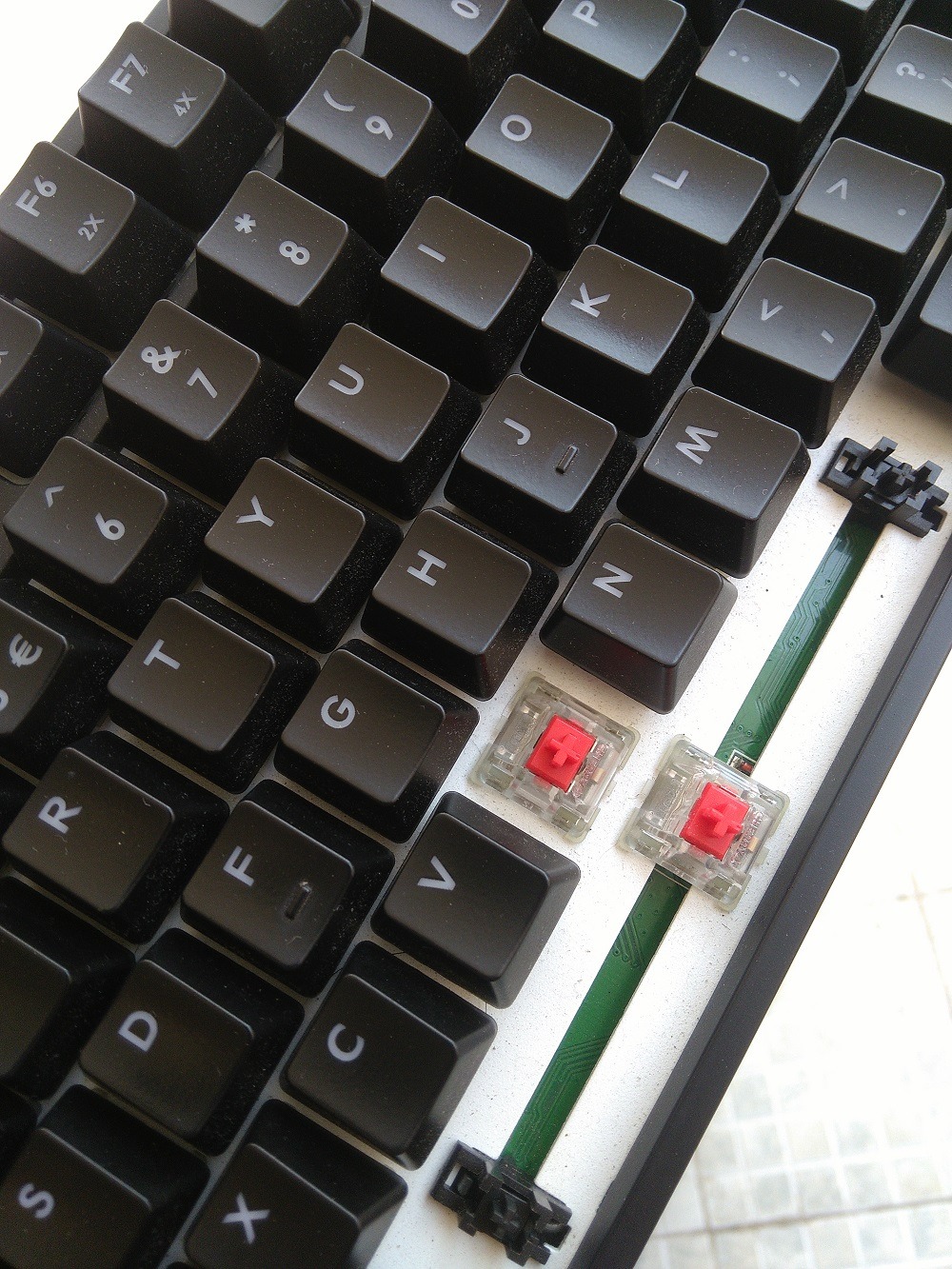
Popping out a key cap we can see the Cherry MX Red switch. Space, Shift, Backspace, Enter, and the num_0, num_Plus, and num_Enter keys also have a spring mechanism underneath, to provide optimum tension while use, which is excellent. Though in practice there is one little quirk with this system. I have a very soft spot for the game CS GO, and I try to play well.
In my quest for Global, I have developed a different keyboard control layout than my colleagues, to gain an edge. I use my thumb to press the space, alt, and super keys, as well as some other keys, but coming to the important bit, as I press very close to the edge of the space key repeatedly the key-cap itself comes loose. Which I begin to fix by pushing the key all the way down in the dead center of the key cap.
I assume this is an issue with the tensioning mechanism. Only exists on the space key as I am aware but it will depend on your personal usage. Moving on, the Keycaps have an underlying white reflective layer to better reflect the light from the LEDs, this gives a nice effect of continuous lighting in theory, but as you get used to it, this only serves as a distraction. Everything looks solid under the hood as well. Consistency and Quality.
Flipping the keyboard over, we are on the backside now. Here, we finally spot a Cooler Master logo and also a barcode to identify your product. There are four small rubber feet on the underside, which are rather small, I wonder what they thought when they came up with this design. Personally, I would’ve appreciated larger rubber feet on the underside.
There is the female micro-USB port which will be used to connect the keyboard to your computer. And Cooler Master has well-provided cable routing channels underneath to exit the cable through the top or either side of the keyboard. There are also two keyboard liftoffs to give a higher angle to the resting keyboard. Mine is a broken cause review sample. Take care of your keyboards people. It’s appreciated that cooler master has designed this keyboard with the concept of less is more. But in their hopes to follow the well-trusted path they and their customers might be giving up on quite a lot of added functionality. No USB pass-through or headphones or jack?

Since RGB is a big feature of this keyboard, let’s point out that the Masterkeys Pro L looks very cool indeed with RGB lighting turned on. It helps to be able to see your keys at night even though you are touch typing, as I am writing this piece. It does also help me quickly identify gaming controls when I am using the gaming lighting scheme. Which is all nice and dandy.
The keyboard comes with a ton of lighting effects built in. I have to confess the MK Pro L makes my desk look damn good and when I come back to my PC I always take a moment to appreciate the keyboard’s lighting effects. CM has done a satisfactory job with the lighting on this keyboard and I would go as far as to say that lighting is the second biggest selling point of the product after its durability and switch type options.
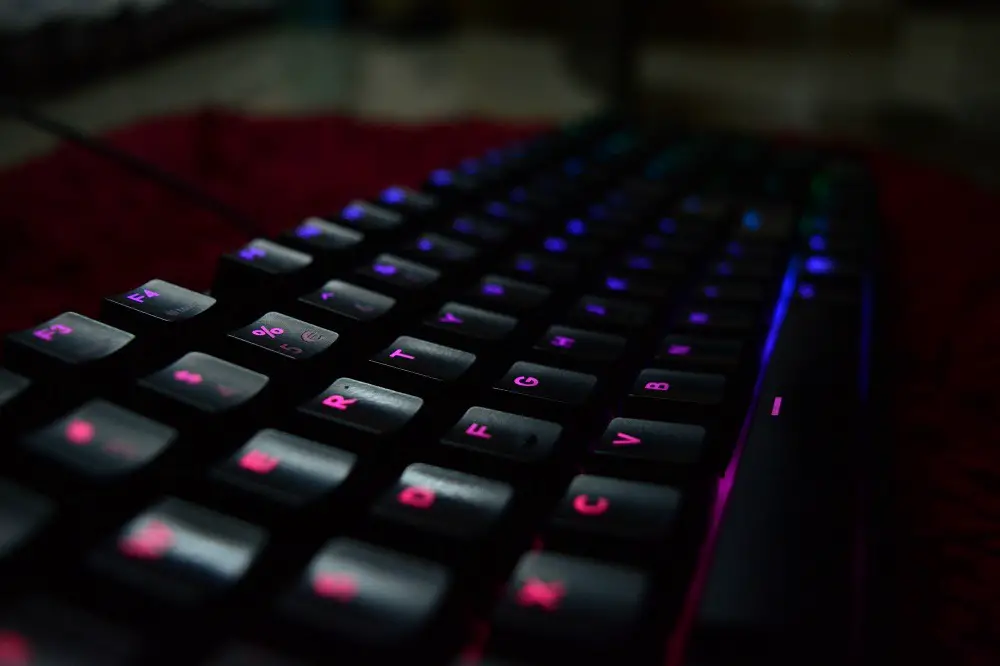
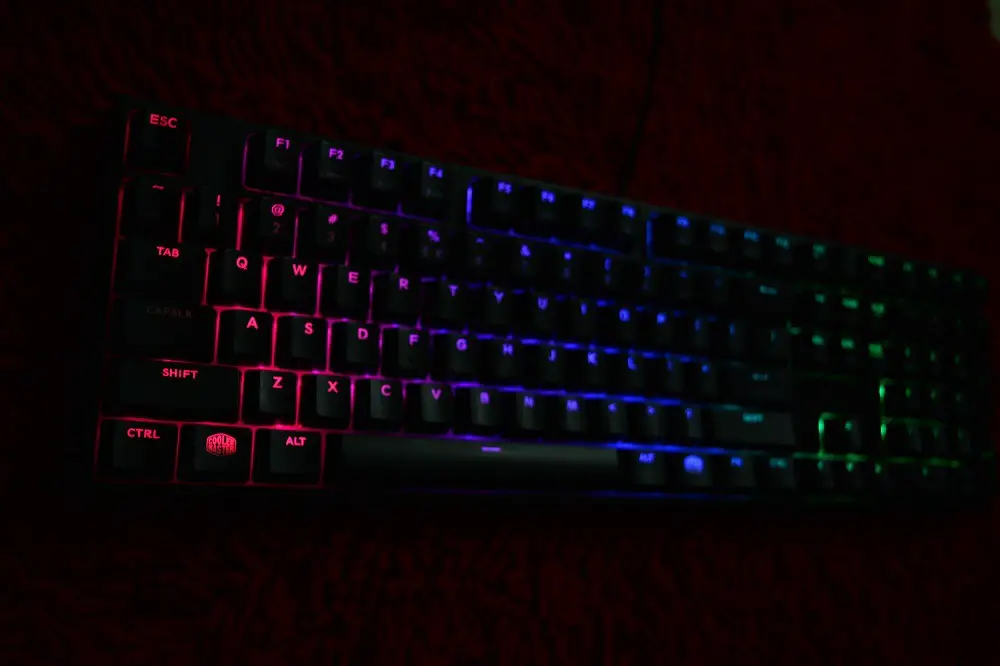
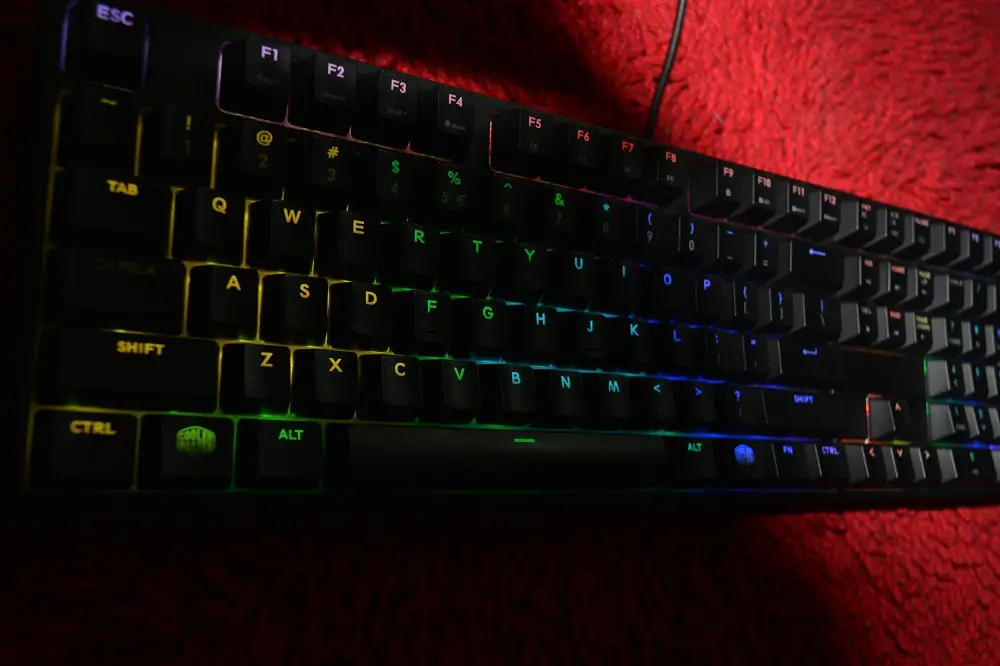
My personal favorites are Color waves and the Rain effect. Do check them out. However good it is, let’s forget nothing is quite good without its flaws. In this one I wish you better luck than mine, the reproduction of the white color is not satisfactory which in my case appears pinkish-white instead of pure white. Secondly, the lower half i.e. the sub-lettering of the key cap is not illuminated, not as much as I would like.
So the sublayer appears a lot dimmer than the primary layer. And finally, not everyone is a fan of keyboard backlight bleeding between the key-caps which also distracts from the dimmer sub-lettering on useful keys, but since Cooler Master decided to run with it and make it a selling point instead of trying to cover it up, this speaks of their direction with the RGB craze and more is definitely more in this case. Currently, only Logitech Romer G provides a non-bleeding backlight that will only shine on the lettering. I am hoping to see manufacturers realize many more innovative but not intrusive ways to implement RGB lighting.
Further, N-key-rollover is supported on this keyboard but it only works on Windows so far, on Linux, it’s a no-show. I was only able to use 6KRO in my usage, which is still quite satisfactory. How fast can you type on this? As fast as you can mash the keys, the keyboard will not be the limiting factor. The macro functionality goes unused for me, as there really is no dummy/extra key to map a macro onto, you may want to assign macros to the scroll lock as it is now a defunct key and is of no use anymore for virtually any modern application.
The lighting performance is great and is visible even in mild sunlight, though you will have to crank up the brightness to the maximum (who doesn’t have their RGB keyboard on max brightness, duh!)
The body of the keyboard is built to outlast the switches, so you get an idea. The only thing that I feel could break early on this keyboard is its micro-USB port on the underside if you really keep unplugging it very often for some reason.
The killer feature of this keyboard as I have said before is its lighting effects and on-the-fly customization. To enter RGB customization mode press and hold FN this will light up the F1, F2, and F3 keys in colors red, green, and blue respectively, with some value of brightness which when combined together gives you the different shades of colors hence RGB lighting.
The amount values of red, green, and blue can be increased or decreased by pressing the respective F1-F3 keys. The system is intuitive and easy to use as the selected color is immediately visible on the FN key. This color can now be added to any key on the board by pressing that particular key. If it seems too much of a hassle to someone then no worries, Cooler Master has already provided tons of lighting effects built in which can be cycled through by pressing down FN and F4.
There also exists a GUI application to change, save and load lighting modes from a hard drive. It is available on the CM website. The application is however only available on Windows Operating Systems. Moreover, the software doesn’t support macros yet, and we don’t know if it ever will. Regardless, the macros can be set through the keyboard itself, without requiring any drivers. So, even if the software side is not looking very shiny, at least the keyboard can do all of that without the proprietary application from CM.

